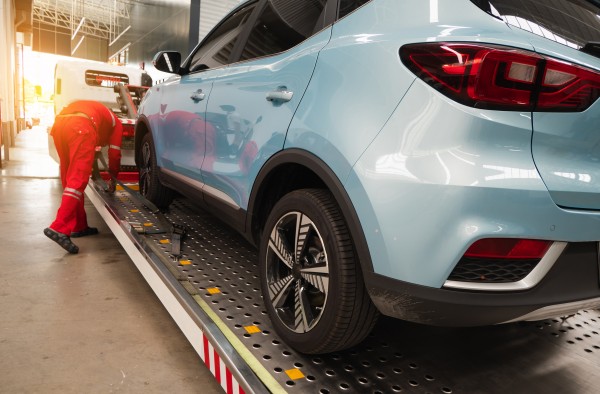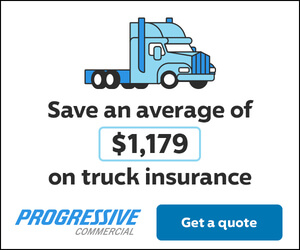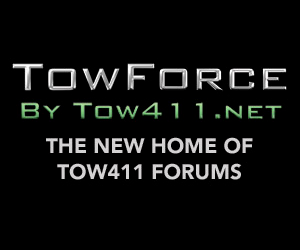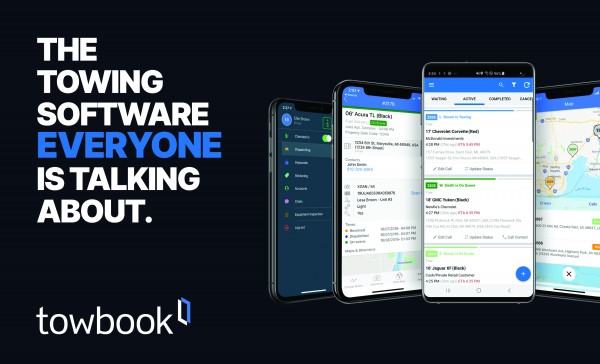 As the use of technology continues to rise in the towing and roadside industry, so do consumer expectations. With the ability to use advanced technology at your fingertips, your customer expects to be informed and cared for every step of the way. Using Towbook facilitates this communication by doing the work for you!
As the use of technology continues to rise in the towing and roadside industry, so do consumer expectations. With the ability to use advanced technology at your fingertips, your customer expects to be informed and cared for every step of the way. Using Towbook facilitates this communication by doing the work for you!
Towbook not only promotes continuous communication with your customers, but also with your motor clubs, body shops, dealerships, police departments, and private property managers too!
- Got a call from the motor club? Accept it with the click of a button!
- Does your body shop or dealership want to send you a job? Our Web Request Portal can help them do exactly that with just a few clicks!
- Impress your police departments with “Vehicle Lookup” technology that allows them to quickly see if a certain vehicle is on your lot!
- Give private property managers a login to their account, so they can view all vehicles that were towed and sign for them as well!
All of the above actions and more, allow you and your staff to reduce time on the phone and maximize your performance and efficiency.
So, what does Towbook do? And why do you need it?
Improved Communication. Managers and dispatchers can communicate with drivers easily. Drivers can accept calls with all the details needed in order to do their job efficiently and update the status of the job from start to finish. You will also be able to chat with your drivers via their mobile applications or send them a text message to make them aware of last-minute changes (chat logs are always saved to the call for future reference).
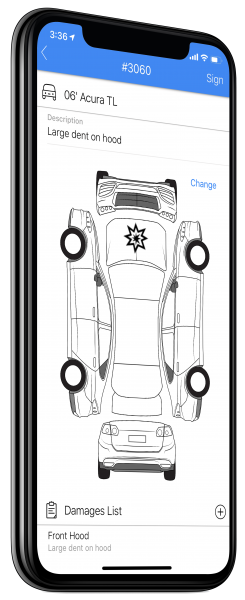 Roadside.io Towbook’s Roadside.io solution, paired with our Customer Survey feature, delivers the latest customer experience capabilities to your fingertips, allowing you to provide an “Uber-like” experience for your customers.
Roadside.io Towbook’s Roadside.io solution, paired with our Customer Survey feature, delivers the latest customer experience capabilities to your fingertips, allowing you to provide an “Uber-like” experience for your customers.
With Roadside.io, you have the option of sharing information with customers while the service is in progress; helping customers understand what’s happening with their service without having to call you for an update. You also have the option of sending the customer a satisfaction survey once the job is complete. You can choose to push these surveys to your website and you can also direct them to your social media outlets where they can complete a review about the service they received.
Minimize Risk of Damage Claims. Drivers can upload photos of the vehicle to a call in real-time; we timestamp and geocode these photos for you along with categorizing them according to what job status the driver was in at the time. An additional precaution can be taken by creating a “Vehicle Damage Form” if there is extensive damage to the vehicle prior to servicing it. The driver can create a report on scene, take photos of the vehicle, indicate anywhere there is damage, and have the customer sign off on the damage form. This report will be saved for future reference and can even be emailed or sent via text to the customer with their receipt.
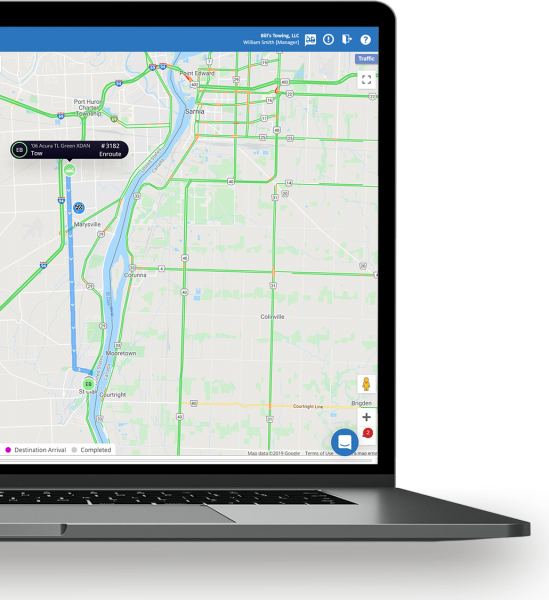 Built-in Navigation and GPS Tracking. You’ll be able to get turn-by-turn directions to your destination right in the application with just a tap!
Built-in Navigation and GPS Tracking. You’ll be able to get turn-by-turn directions to your destination right in the application with just a tap!
If you aren’t currently using a GPS solution, Towbook is equipped with built-in GPS tracking which will automatically update the drivers’ location according to their app settings.
Towbook is also integrated with leading GPS companies like AT&T Fleet Complete, DriverLocate, Samsara, US Fleet Tracking , and Webfleet Solutions; allowing you to send calls directly to the GPS unit in your truck.
Drivers can use the GPS unit to navigate to the service location, and when they update the status of the call on the GPS unit it will automatically update their status in Towbook. Your Towbook app can also use the GPS location from your trucks and display that on the map in Towbook. There are many other fantastic features of GPS units that help you manage and maintain your fleet.
Pre-Trip Inspection Management and User Check-In. If you want your team to inspect their trucks and other equipment before (or after) every shift, they can do that easily using the Towbook mobile apps and our Equipment Inspection tool. Each inspection report is time stamped, and managers will receive an email alert any time there is an Equipment Inspection failure.
Completed inspections are also available to open/view on mobile apps, so if drivers need to present a completed pre-trip inspection to a law enforcement officer they can do so right from their phone!
Our “User Check-In” feature allows drivers to check-in and out for work directly from their mobile application. This allows managers and dispatchers to know who is currently on-shift to accept jobs. You are also able to run a report to review check in/check out times for drivers.
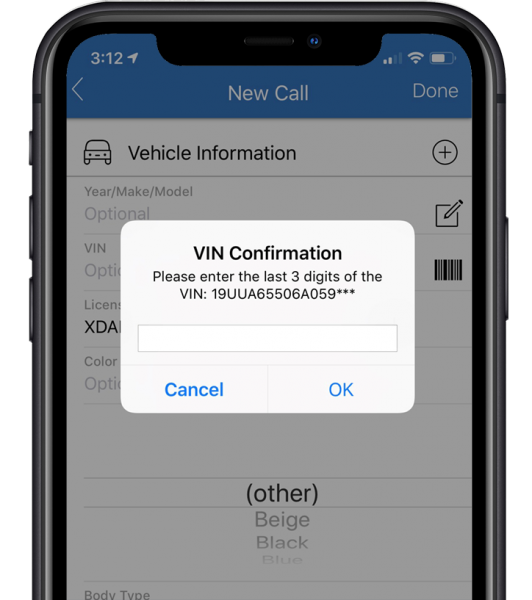 Plate-to-VIN Technology. No VIN – no problem! Towbook’s plate-to-VIN feature saves time and eliminates mistakes. Simply enter the plate number and the state in which the vehicle is licensed, and Towbook will return the full VIN with the make, model, and year of the vehicle. You’ll also have the option of using our VIN scanner, which will populate the VIN in the call just by scanning the vehicle’s barcode.
Plate-to-VIN Technology. No VIN – no problem! Towbook’s plate-to-VIN feature saves time and eliminates mistakes. Simply enter the plate number and the state in which the vehicle is licensed, and Towbook will return the full VIN with the make, model, and year of the vehicle. You’ll also have the option of using our VIN scanner, which will populate the VIN in the call just by scanning the vehicle’s barcode.
Private Property Features. Alongside tagging accounts, two of our most notable private property features for the mobile applications include “On Scene Call Creation” and “Stickering”:
- On Scene Call Creation: This allows your drivers to do their job as quickly as possible by allowing them the option to create a call by simply snapping a picture of the vehicle; the call will automatically populate the address they’re located at and will allow them to update any additional details later.
- Stickering: One of Towbook’s fastest-growing features is our Stickering app. With Stickering, you can create a virtual sticker in Towbook and “tag” those vehicles that you might be able to tow after a few hours or a few days. When the sticker expires, you receive a notification that the vehicle can be towed.
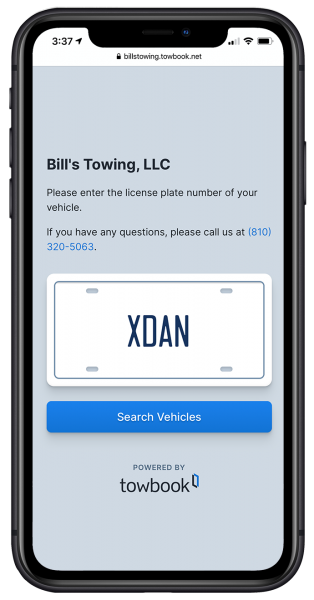 Impound/Storage Lot Management and Vehicle Lookup. You’ll be able to track and release your current impounded/stored vehicles on your lot right from the mobile application.
Impound/Storage Lot Management and Vehicle Lookup. You’ll be able to track and release your current impounded/stored vehicles on your lot right from the mobile application.
You’ll even be able to send the impound invoice via text or e-mail.
In using our “Vehicle Lookup” technology, your customers, police departments, and private property accounts will thank you! It makes it simple for them to look and see if you have a certain vehicle on your lot without calling.
Digital Dispatching. Whether you are a dispatcher or manager sending out calls or an owner/operator working in the field, you’ll be able to accept motor club calls while out of the office or on the road using Towbook’s mobile apps. Towbook is integrated with all the major motor clubs for your convenience! A couple of taps to accept the call and you’ll be on your way!
Paperless Invoicing. Save time by texting or emailing your customer an invoice right on-scene! If paper invoices are a must, we integrate with Zebra mobile printers to print your customers’ receipt on the spot.
Additional Information. On top of the many features we’ve already mentioned, the drivers will be able to add additional information to the call via their app according to the preferences setup by management, this includes:
- Additional line items/charges.
- Record payments received in the field.
- Collect customer signatures for archiving and appearing on receipts.
- Any additional notes regarding the service or customer.
- Record vehicle odometer.
- Add any company expenses, such as fuel along with a picture of the receipt for manager review.
Technology is causing a world-wide evolution and it’s important to find resources that can be of benefit to us. First it was computers, now it’s a little device in our pocket that we all rely on daily – whether for business or our personal lives.
Using software to manage your business increases efficiency and profitability but it’s also a great tool to woo potential clients; demonstrating that you are a forward-thinking towing/road service company and are interested in adapting to the ever-changing technological environment.
Towbook Management Software is the unquestioned leader in cloud-based towing software, headquartered in Michigan, and has provided service for over fourteen years. Integrating the industry’s most advanced and flexible software, Towbook supports all sizes and types of towing, recovery and roadside service operations.
We provide tools made possible by the latest technology, and we help companies to raise their level of service while lowering their operating costs.
Plus, our commitment to you will be never-ending! We take great pride in having the industry’s best customer support. Support is free and available 24/7/365—even on holidays.
What We Offer
Free Trial, Free Setup, Free Support.
Towbook offers a 30-day free trial with free setup and support, and there are no contracts. Plus, you don’t need a separate Towbook license for each employee—your subscription always includes unlimited user accounts!
Website: www.towbook.com
Inquiries: sales@towbook.com
24/7/365 Support Line: (810) 320-5063
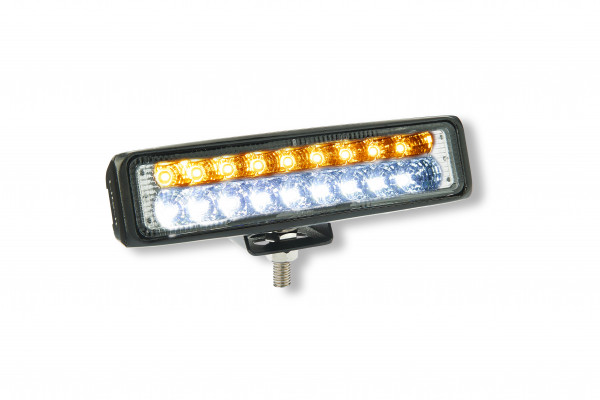 Custer Products offers a wide variety of different products for your service trucks. From wireless light bars to replacement marker lights, Custer has all of your lighting needs. One of Custer’s newest products is the 54-Watt work light/amber strobe combo light (WL54AW). Similar to Custer’s WL19F in size and shape, the WL54AW includes a 27-watt white work light in the bottom row of diodes and a 27-watt amber strobe light on the top. This light includes a 3-wire hook-up which allows the driver to operate the strobe and work light features independently.
Custer Products offers a wide variety of different products for your service trucks. From wireless light bars to replacement marker lights, Custer has all of your lighting needs. One of Custer’s newest products is the 54-Watt work light/amber strobe combo light (WL54AW). Similar to Custer’s WL19F in size and shape, the WL54AW includes a 27-watt white work light in the bottom row of diodes and a 27-watt amber strobe light on the top. This light includes a 3-wire hook-up which allows the driver to operate the strobe and work light features independently. 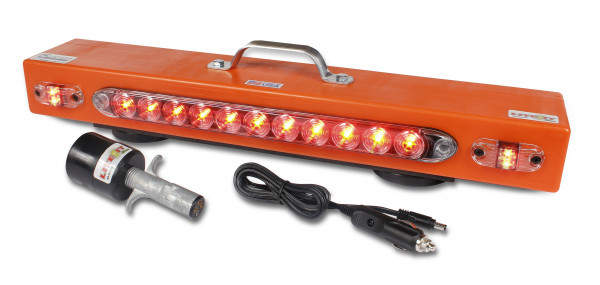 Custer Products carries an entire line of wireless tow lights to help keep our tow truck drivers safe. The newest addition to Custer’s wireless line is the 23” wireless light-duty tow light (LIW-LDTL). This bar was designed with tow truck drivers in mind. Designed to withstand even the most inclement weather conditions, the polyethylene case is nearly indestructible and won’t warp or crack. The steel handle on top and the 105 lb. pull rubber-coated magnets on the bottom make for easy on-and-off installation while its low-profile design saves room in storage. Just like all of Custer’s wireless light bars, this bar is individually serialized which eliminates cross-talk between units and protects the owner against theft. This bar meets all DOT requirements, comes with a 3-year warranty and is proudly manufactured at Custer Products’ facility in Massillon OH.
Custer Products carries an entire line of wireless tow lights to help keep our tow truck drivers safe. The newest addition to Custer’s wireless line is the 23” wireless light-duty tow light (LIW-LDTL). This bar was designed with tow truck drivers in mind. Designed to withstand even the most inclement weather conditions, the polyethylene case is nearly indestructible and won’t warp or crack. The steel handle on top and the 105 lb. pull rubber-coated magnets on the bottom make for easy on-and-off installation while its low-profile design saves room in storage. Just like all of Custer’s wireless light bars, this bar is individually serialized which eliminates cross-talk between units and protects the owner against theft. This bar meets all DOT requirements, comes with a 3-year warranty and is proudly manufactured at Custer Products’ facility in Massillon OH. One of Custer’s highest selling product lines is their LED rooftop light bars. Custer offers everything from 11’’ miniature rooftop light bars to 72” full size light bars. One of the newest additions to the rooftop light bar line is the LED Amber/White rooftop light bar which is available in 29”, 56”, and 72” lengths to fit several different sizes of service trucks. This strobe light bar comes with thirty flash patterns all controlled from a multi-function control box that sits in the cab of the truck. This bar comes with arrow stick/traffic control built in with seven different flash patterns for each function. This bar comes with LED side marker lights, red LED stop/tail/turn rear facing lights, LED alley lights which can be steady on or strobe, and LED take down lights which can also be steady on or strobe. This amber/white rooftop light bar is the perfect addition to any service truck that wants to stay safe while working on the side of the road.
One of Custer’s highest selling product lines is their LED rooftop light bars. Custer offers everything from 11’’ miniature rooftop light bars to 72” full size light bars. One of the newest additions to the rooftop light bar line is the LED Amber/White rooftop light bar which is available in 29”, 56”, and 72” lengths to fit several different sizes of service trucks. This strobe light bar comes with thirty flash patterns all controlled from a multi-function control box that sits in the cab of the truck. This bar comes with arrow stick/traffic control built in with seven different flash patterns for each function. This bar comes with LED side marker lights, red LED stop/tail/turn rear facing lights, LED alley lights which can be steady on or strobe, and LED take down lights which can also be steady on or strobe. This amber/white rooftop light bar is the perfect addition to any service truck that wants to stay safe while working on the side of the road.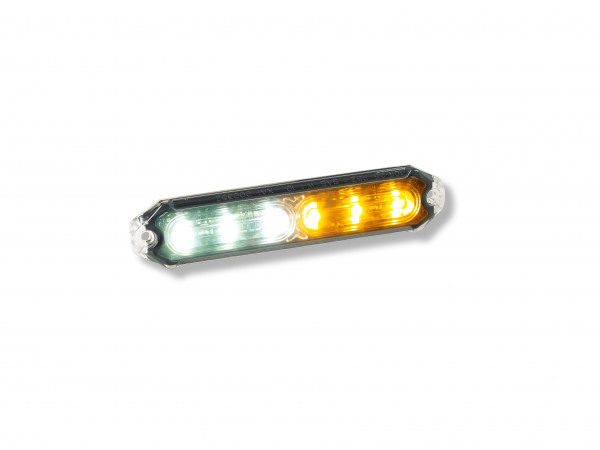 Along with rooftop strobe light bars, Custer Products also sells a wide variety of surface mount strobes. One of the newest additions to Custer’s line is the LED Class I Surface mount strobe (STR-XL1) which is available in Amber (not pictured) and Amber/White. With very low-profile dimensions of 4.85” L x 1” W x 0.3” D, the STR-XL1 series is small in size but powerful in its brightness. This strobe light comes with 24 different flash patterns and can be synchronized with up to twelve other modules of its kind. The STR-XL1 series is also able to do an alternating pattern or a “wig-wag” function with another light. This reverse polarity protected strobe light comes with a Class I SAE certification and has a waterproof rating
Along with rooftop strobe light bars, Custer Products also sells a wide variety of surface mount strobes. One of the newest additions to Custer’s line is the LED Class I Surface mount strobe (STR-XL1) which is available in Amber (not pictured) and Amber/White. With very low-profile dimensions of 4.85” L x 1” W x 0.3” D, the STR-XL1 series is small in size but powerful in its brightness. This strobe light comes with 24 different flash patterns and can be synchronized with up to twelve other modules of its kind. The STR-XL1 series is also able to do an alternating pattern or a “wig-wag” function with another light. This reverse polarity protected strobe light comes with a Class I SAE certification and has a waterproof rating
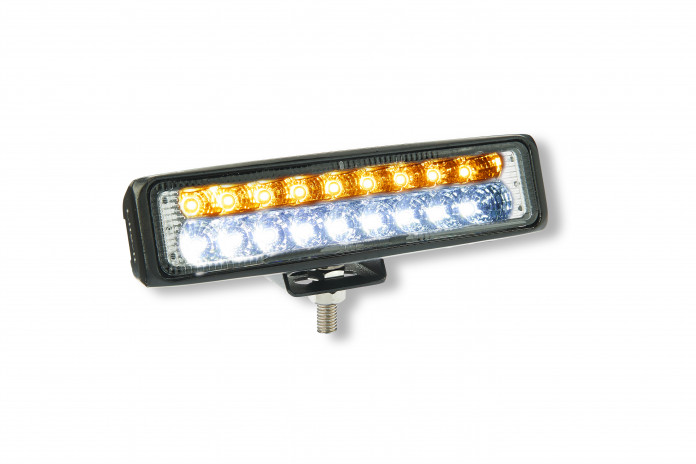
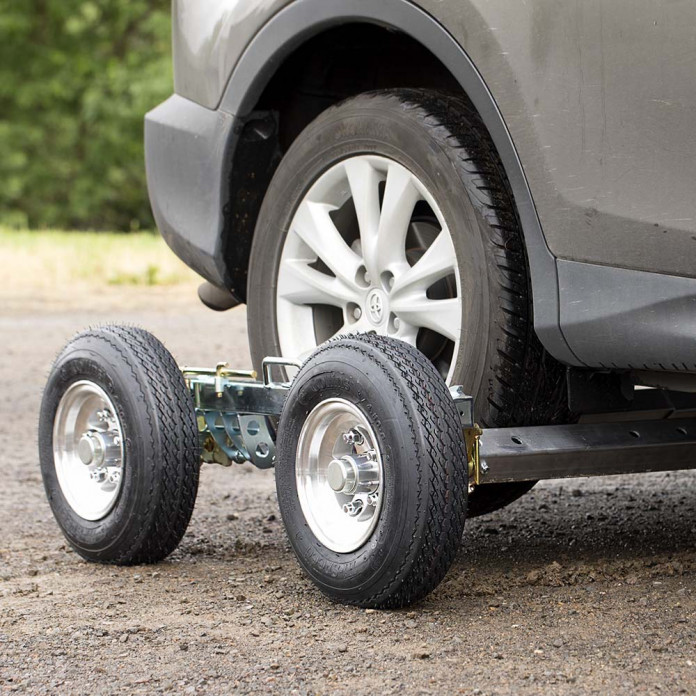
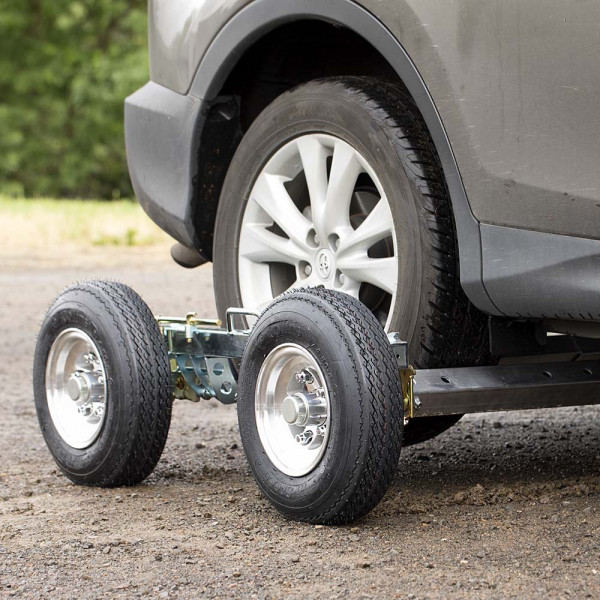 135 miles – 35 of those through rough dirt roads, 100 highway miles. That’s the recent log of a professional tower, one of many throughout the week that come in from motorists being stranded or local businesses servicing vehicles. Each one an opportunity to help, grow business and provide for a family. On this particular 90-degree day, the vehicle was off the beaten path (literally an unpaved road) in the eastern Oregon desert hundreds of miles from town round-trip, leaving the tower to figure out a way to bring the vehicle back safely. So he turned to his equipment – a wheel lift and Collins Dollies, confident that they could shoulder the load down the rough, dusty track. Confident because he’s done it before. It’s why he chooses Collins Dollies.
135 miles – 35 of those through rough dirt roads, 100 highway miles. That’s the recent log of a professional tower, one of many throughout the week that come in from motorists being stranded or local businesses servicing vehicles. Each one an opportunity to help, grow business and provide for a family. On this particular 90-degree day, the vehicle was off the beaten path (literally an unpaved road) in the eastern Oregon desert hundreds of miles from town round-trip, leaving the tower to figure out a way to bring the vehicle back safely. So he turned to his equipment – a wheel lift and Collins Dollies, confident that they could shoulder the load down the rough, dusty track. Confident because he’s done it before. It’s why he chooses Collins Dollies.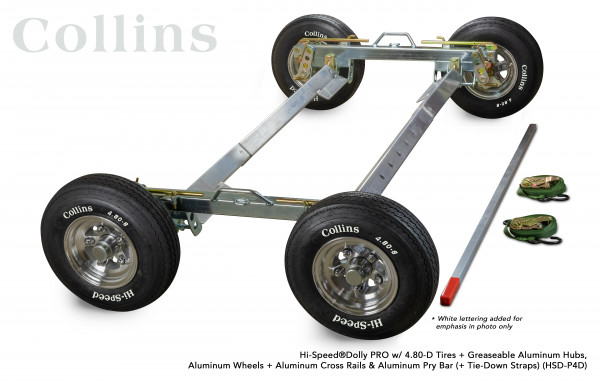 Collins Hi-Speed Dollies came about to increase the safety and speed that a vehicle could be recovered. Prior to that, dollies were completely assembled underneath a vehicle after using a jack to raise it high enough. Though a great invention for their time and capabilities, these pan dollies were heavy and exposed the operator to roadside hazards for an extended period because of the time it took to assemble. Collins Hi-Speed Dollies improved upon this concept and changed the towing industry with a self-loading dolly in 1972. Their Hi-Speed name is partly due to quicker setup and tow times, since the dollies themselves were used to raise the vehicle.
Collins Hi-Speed Dollies came about to increase the safety and speed that a vehicle could be recovered. Prior to that, dollies were completely assembled underneath a vehicle after using a jack to raise it high enough. Though a great invention for their time and capabilities, these pan dollies were heavy and exposed the operator to roadside hazards for an extended period because of the time it took to assemble. Collins Hi-Speed Dollies improved upon this concept and changed the towing industry with a self-loading dolly in 1972. Their Hi-Speed name is partly due to quicker setup and tow times, since the dollies themselves were used to raise the vehicle.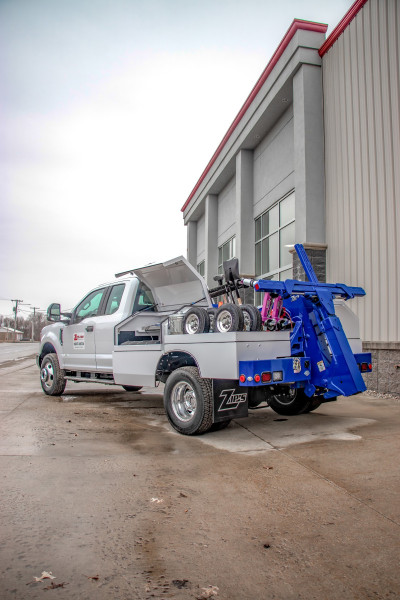 Because you don’t get to choose where or in what conditions the vehicle lies, it helps to have the proper equipment that works as hard as you do. Collins Dollies are built to handle inclement weather, rough road conditions, heavy loads and long-distance towing if required. Properly maintained, loaded and secured, Collins Hi-Speed Dollies can safely be used on highways, freeways and interstates to move the vehicle where you need to go. A single service truck with a wheel lift and Collins Dollies can do the work of multiple trucks, increasing profitability.
Because you don’t get to choose where or in what conditions the vehicle lies, it helps to have the proper equipment that works as hard as you do. Collins Dollies are built to handle inclement weather, rough road conditions, heavy loads and long-distance towing if required. Properly maintained, loaded and secured, Collins Hi-Speed Dollies can safely be used on highways, freeways and interstates to move the vehicle where you need to go. A single service truck with a wheel lift and Collins Dollies can do the work of multiple trucks, increasing profitability.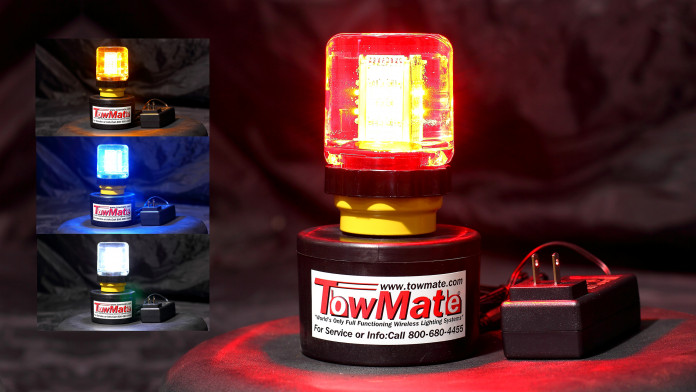
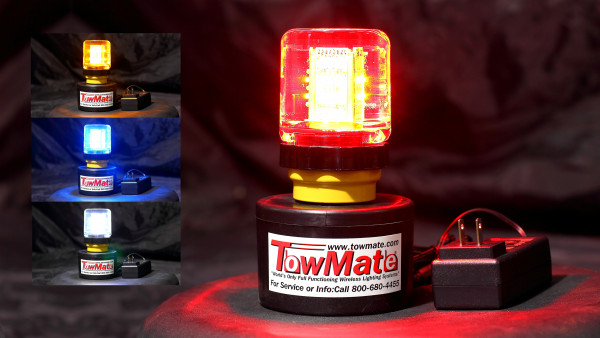 W
W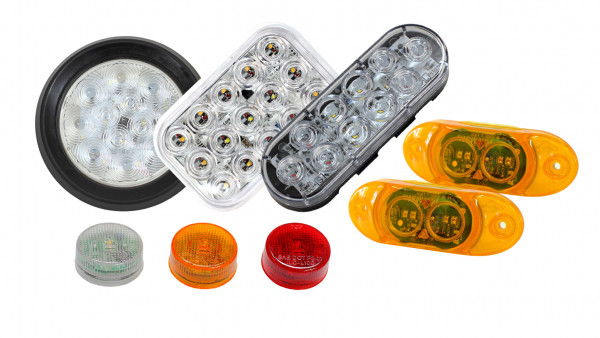 TowMate started from very humble beginnings with the owner flagging down tow operators to show them his new invention, wireless tow lights. As far back as 1985, he made his way around the country doing this often stopping to sleep in his vehicle when he could afford no other option. Fast forward to today and nearly every tow parts supplier in North America, and many overseas, carry the TowMate line. Most readers of this magazine are probably familiar with that story and with the strides in innovation TowMate continues to make in terms of wireless tow lights. However, fewer are likely to be aware of just all TowMate offers today for each of the needs mentioned in the above paragraph. Every TowMate dealer has access to their full product offering too so take note on what you would like more information on after reading the rest of this and be sure to ask your local supplier.
TowMate started from very humble beginnings with the owner flagging down tow operators to show them his new invention, wireless tow lights. As far back as 1985, he made his way around the country doing this often stopping to sleep in his vehicle when he could afford no other option. Fast forward to today and nearly every tow parts supplier in North America, and many overseas, carry the TowMate line. Most readers of this magazine are probably familiar with that story and with the strides in innovation TowMate continues to make in terms of wireless tow lights. However, fewer are likely to be aware of just all TowMate offers today for each of the needs mentioned in the above paragraph. Every TowMate dealer has access to their full product offering too so take note on what you would like more information on after reading the rest of this and be sure to ask your local supplier.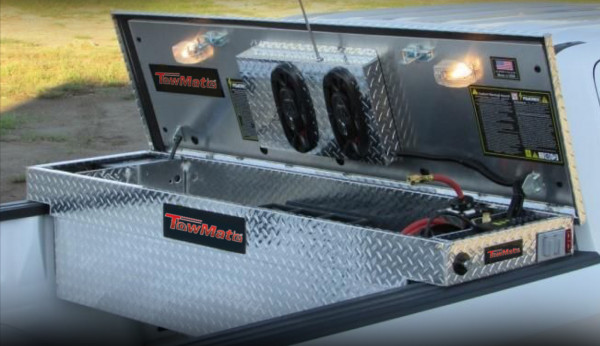 When it comes to lights on a service truck, the setup can range from ‘four-corner strobes’ to adding an overhead light bar or even a traffic arrow at the rear. There are no lights in the world that are as rich in functionality and simple to install than the Power-Link series made by TowMate. These lights can operate off of factory wiring (think, no more running wires from the front of the truck to the rear), and are completely programmable to operate as STT/markers/strobes/work lights/all of the above in some cases. Not to mention the fact that the Power-Link overhead light bars simply require power/ground to the bar and power/ground to the controller to operate. The same is true for the traffic control arrows in this series, which come in varying lengths and with a ‘split option’ as well. And, for the win, the best part is they are made in the USA and carry a lifetime warranty on electronics and LED’s.
When it comes to lights on a service truck, the setup can range from ‘four-corner strobes’ to adding an overhead light bar or even a traffic arrow at the rear. There are no lights in the world that are as rich in functionality and simple to install than the Power-Link series made by TowMate. These lights can operate off of factory wiring (think, no more running wires from the front of the truck to the rear), and are completely programmable to operate as STT/markers/strobes/work lights/all of the above in some cases. Not to mention the fact that the Power-Link overhead light bars simply require power/ground to the bar and power/ground to the controller to operate. The same is true for the traffic control arrows in this series, which come in varying lengths and with a ‘split option’ as well. And, for the win, the best part is they are made in the USA and carry a lifetime warranty on electronics and LED’s.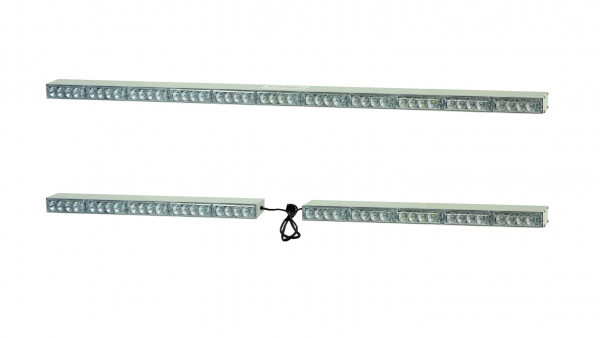 “Okay, I’ve lit up my truck, but I need a way to begin warning motorists of my presence in advance of the truck, what have you got for that,” you ask? While there are many options for portable lighting systems and LED flares in the market, none exceed the brightness of the MO-PRO “move over LED flare.” With its 105LB pull magnetic base, four light patterns (red flare / red-blue strobe / amber-white strobe / solid white area light), along with a 16 hour run time on a single charge, the MO-PRO is the most versatile portable light we have ever seen. Built to a higher standard and including a hard-shell carrying case, you will not regret adding one to your service trucks repertoire. Want to add one more layer of safety for the roadside jobs? TowMate has developed a perimeter warning system, the ‘Safety Alert System,’ that alerts roadside workers when a vehicle has potentially crossed into their work area.
“Okay, I’ve lit up my truck, but I need a way to begin warning motorists of my presence in advance of the truck, what have you got for that,” you ask? While there are many options for portable lighting systems and LED flares in the market, none exceed the brightness of the MO-PRO “move over LED flare.” With its 105LB pull magnetic base, four light patterns (red flare / red-blue strobe / amber-white strobe / solid white area light), along with a 16 hour run time on a single charge, the MO-PRO is the most versatile portable light we have ever seen. Built to a higher standard and including a hard-shell carrying case, you will not regret adding one to your service trucks repertoire. Want to add one more layer of safety for the roadside jobs? TowMate has developed a perimeter warning system, the ‘Safety Alert System,’ that alerts roadside workers when a vehicle has potentially crossed into their work area.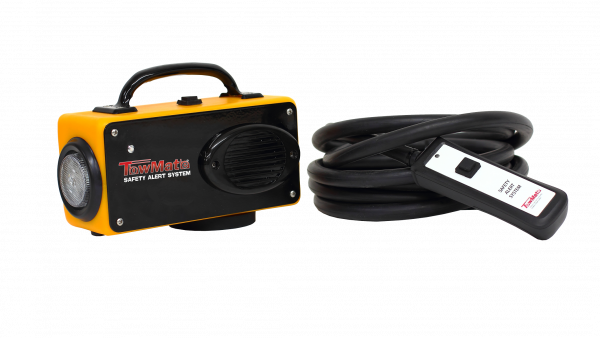 Aside from lighting and roadside
Aside from lighting and roadside 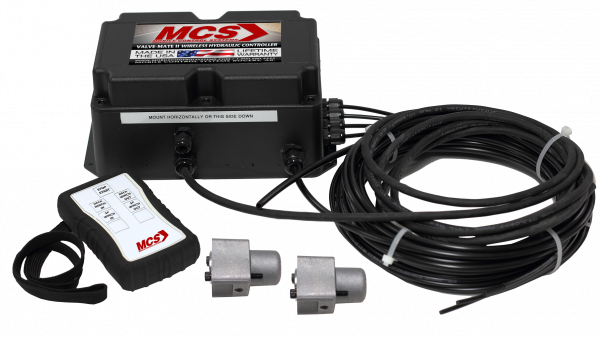 Finally, with the acquisition of Mobile Control Systems, TowMate now offers and manufactures a full range of radio remote solutions for winches, lifts, cranes, and more. The Valve-Mate series is, once again, one of the most simple-to-install remote valve operating systems in the world and comes at a highly competitive price. Manufactured right next door to TowMate’s main operations, held to the same quality standards, and carrying a lifetime warranty on electronic components, the Mobile Control Systems remote solutions should definitely be considered when making your next purchase.
Finally, with the acquisition of Mobile Control Systems, TowMate now offers and manufactures a full range of radio remote solutions for winches, lifts, cranes, and more. The Valve-Mate series is, once again, one of the most simple-to-install remote valve operating systems in the world and comes at a highly competitive price. Manufactured right next door to TowMate’s main operations, held to the same quality standards, and carrying a lifetime warranty on electronic components, the Mobile Control Systems remote solutions should definitely be considered when making your next purchase.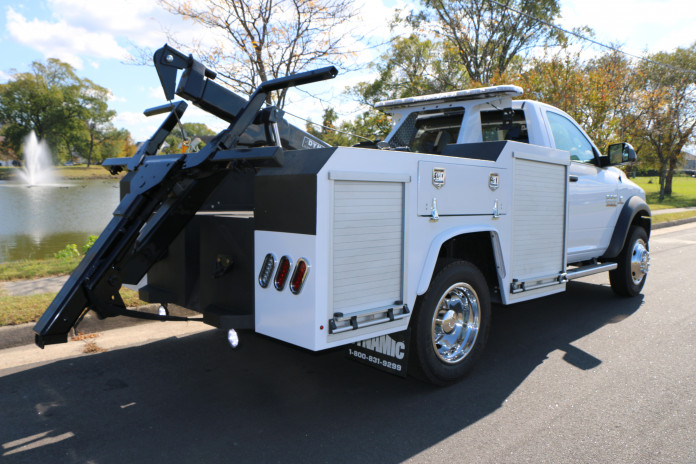
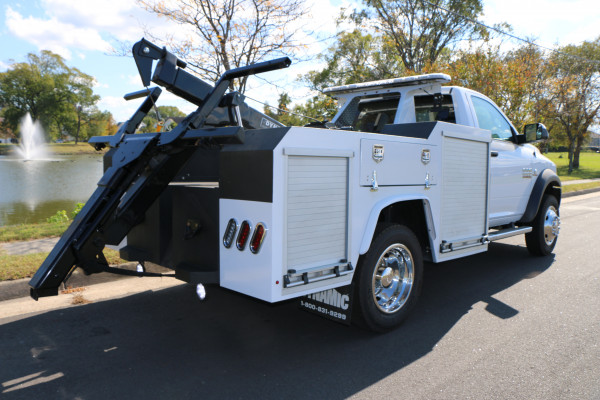 D
D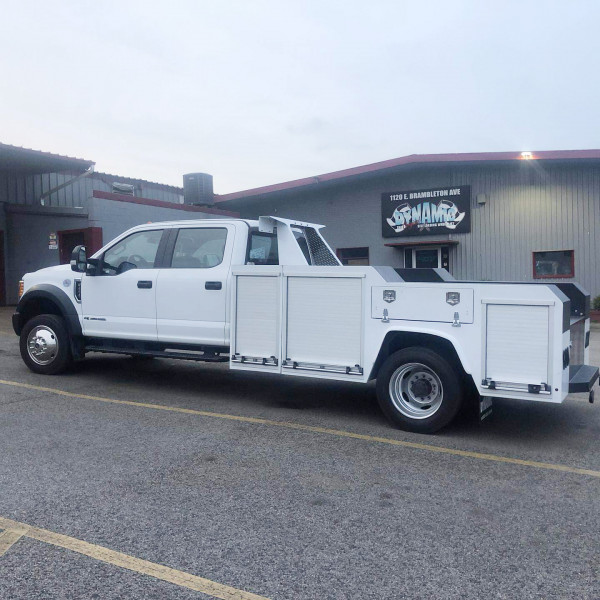 The Service Truck is equipped with four rollup-door storage compartments for safe and easy curbside access totaling an amazing 80-cubic feet of usable space. The fenders are poly, so no more rust, and they are lighter, so you can carry more cargo weight without the risk of being overweight.
The Service Truck is equipped with four rollup-door storage compartments for safe and easy curbside access totaling an amazing 80-cubic feet of usable space. The fenders are poly, so no more rust, and they are lighter, so you can carry more cargo weight without the risk of being overweight.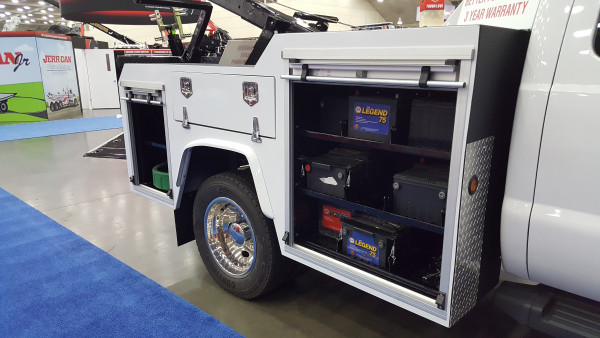 Our units have roll-up doors that do not swing out into the path of traffic, but rather roll up into the truck. This eliminates the possibility of passing vehicles catching an open storage compartment door and creating a traffic incident with the service truck endangering the life of the tower or customer.
Our units have roll-up doors that do not swing out into the path of traffic, but rather roll up into the truck. This eliminates the possibility of passing vehicles catching an open storage compartment door and creating a traffic incident with the service truck endangering the life of the tower or customer.
 B
B





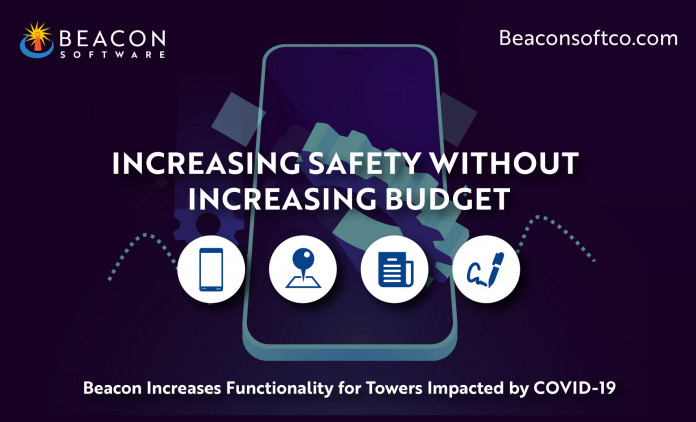
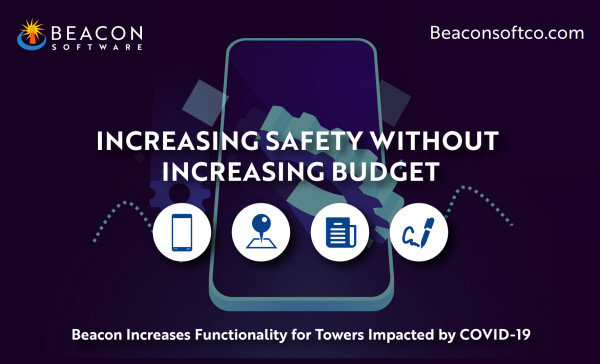 B
B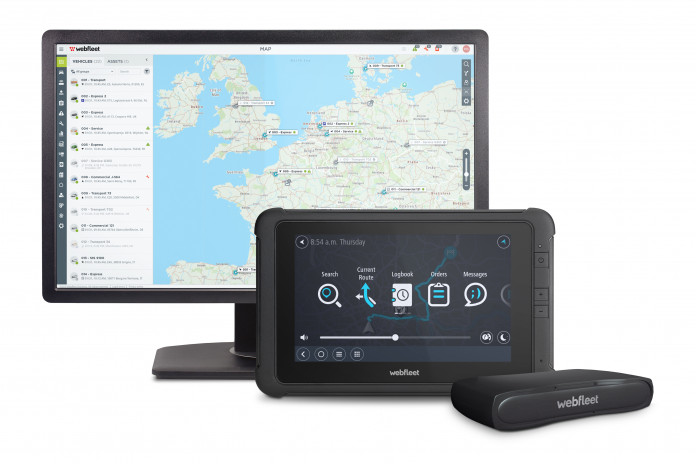
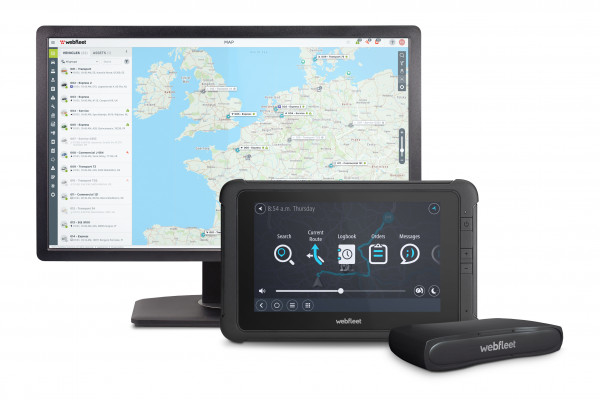 W
W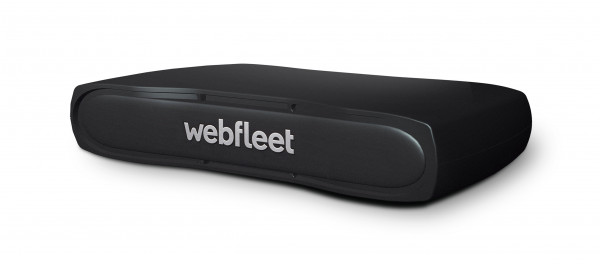 Optimize your workforce & business performance by improving your fleet performance using precise up-to-date vehicle data and reduce your running costs by monitoring real-time and historical fuel usage.
Optimize your workforce & business performance by improving your fleet performance using precise up-to-date vehicle data and reduce your running costs by monitoring real-time and historical fuel usage.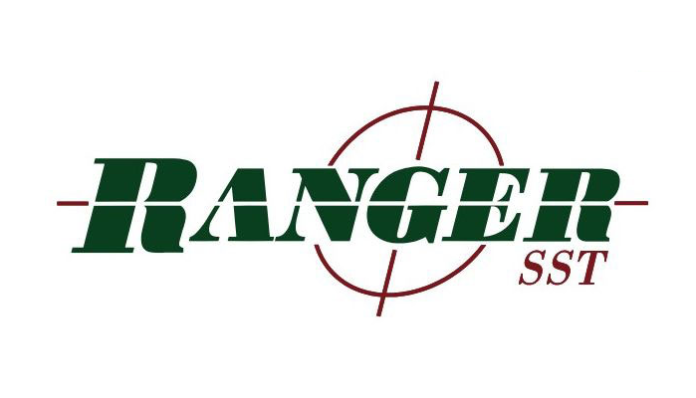
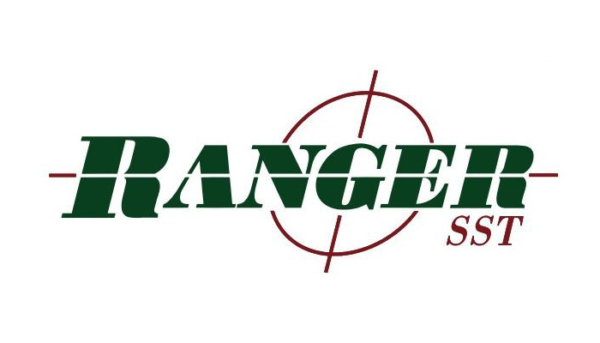
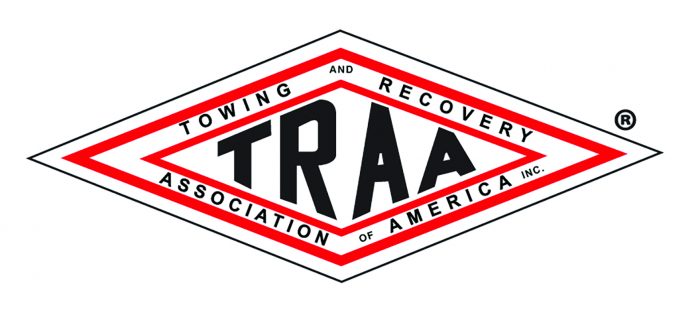
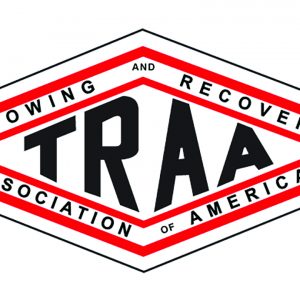

 SAN ANTONIO — San Antonio Spurs’ Lonnie Walker IV is now an athlete-investor in the San Antonio-based company, Mach1 Services.
SAN ANTONIO — San Antonio Spurs’ Lonnie Walker IV is now an athlete-investor in the San Antonio-based company, Mach1 Services.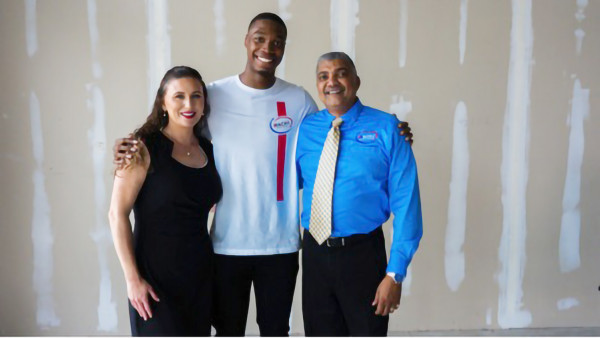
 “Being able to invest and be involved in this. I’m just truly blessed,” Walker said. “Being able to have an app like that and fully invested and you fully trust that they’re going to come and help you out, not only in a help situation, but also in a safety situation.”
“Being able to invest and be involved in this. I’m just truly blessed,” Walker said. “Being able to have an app like that and fully invested and you fully trust that they’re going to come and help you out, not only in a help situation, but also in a safety situation.”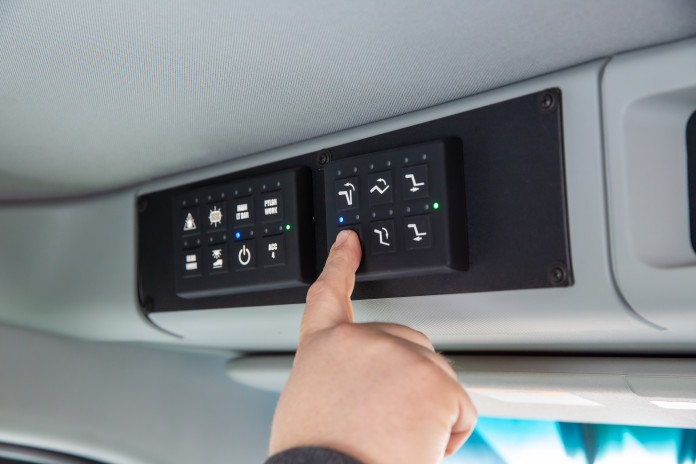
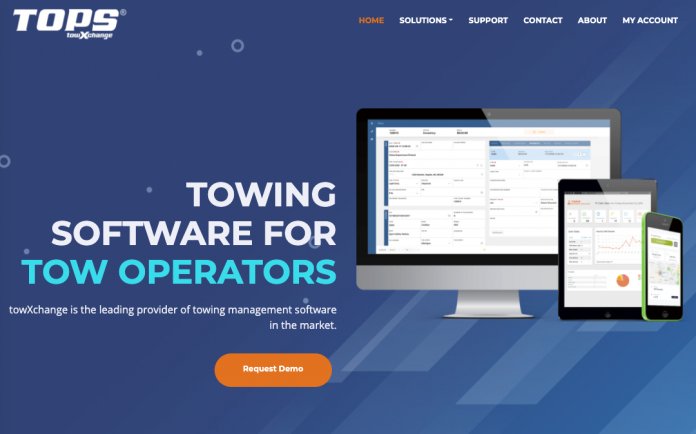
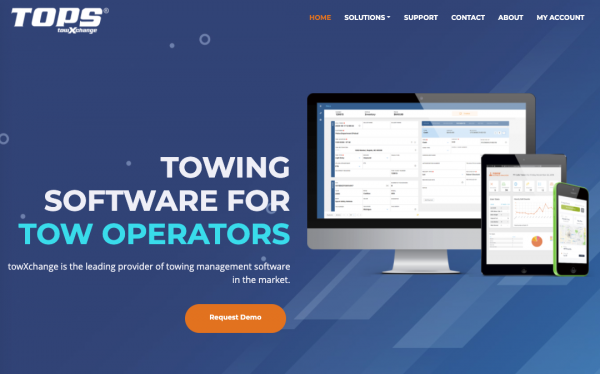 A
A
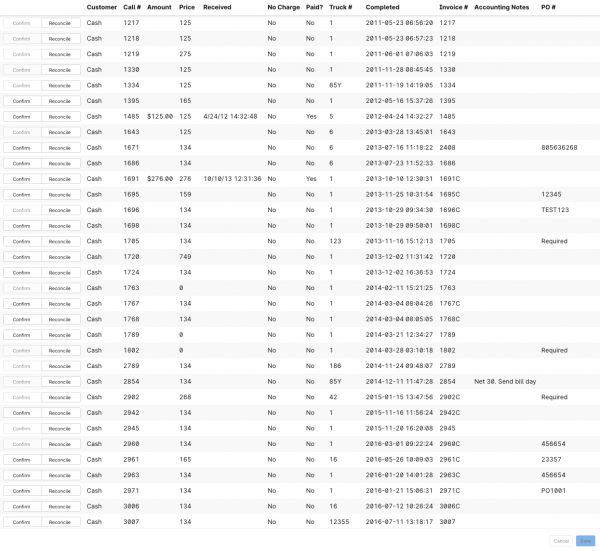
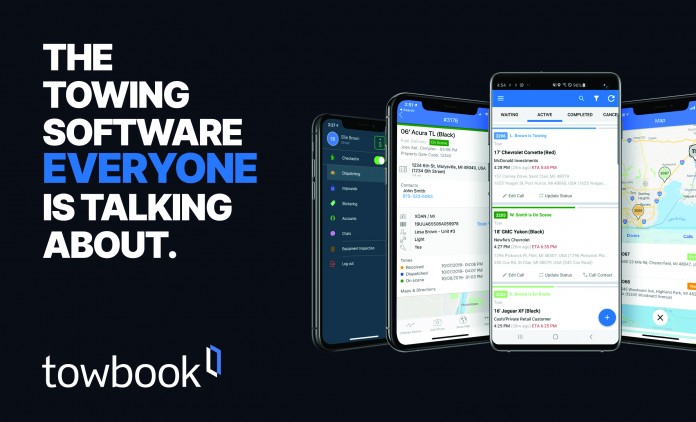
 A
A Roadside.io
Roadside.io Built-in Navigation and GPS Tracking. You’ll be able to get turn-by-turn directions to your destination right in the application with just a tap!
Built-in Navigation and GPS Tracking. You’ll be able to get turn-by-turn directions to your destination right in the application with just a tap! Plate-to-VIN Technology. No VIN – no problem! Towbook’s plate-to-VIN feature saves time and eliminates mistakes. Simply enter the plate number and the state in which the vehicle is licensed, and Towbook will return the full VIN with the make, model, and year of the vehicle. You’ll also have the option of using our VIN scanner, which will populate the VIN in the call just by scanning the vehicle’s barcode.
Plate-to-VIN Technology. No VIN – no problem! Towbook’s plate-to-VIN feature saves time and eliminates mistakes. Simply enter the plate number and the state in which the vehicle is licensed, and Towbook will return the full VIN with the make, model, and year of the vehicle. You’ll also have the option of using our VIN scanner, which will populate the VIN in the call just by scanning the vehicle’s barcode.  Impound/Storage Lot Management and Vehicle Lookup. You’ll be able to track and release your current impounded/stored vehicles on your lot right from the mobile application.
Impound/Storage Lot Management and Vehicle Lookup. You’ll be able to track and release your current impounded/stored vehicles on your lot right from the mobile application.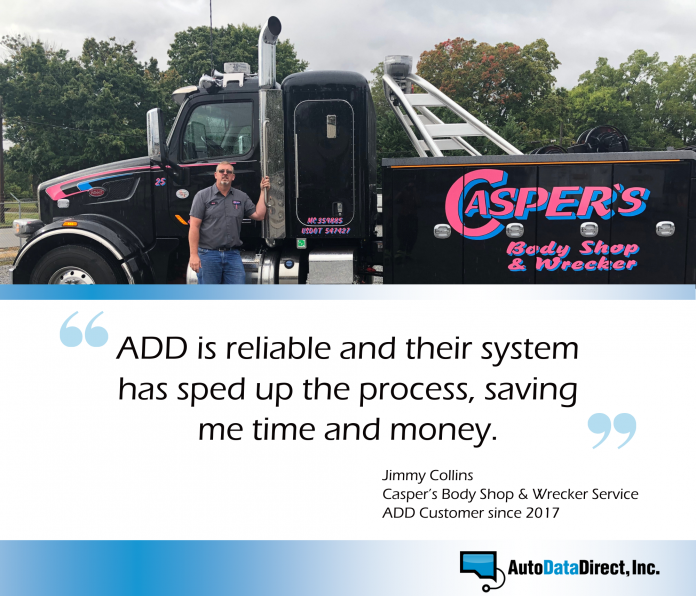
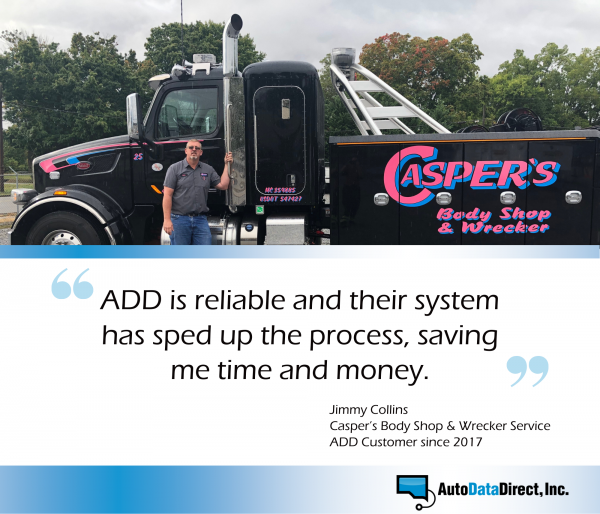 A
A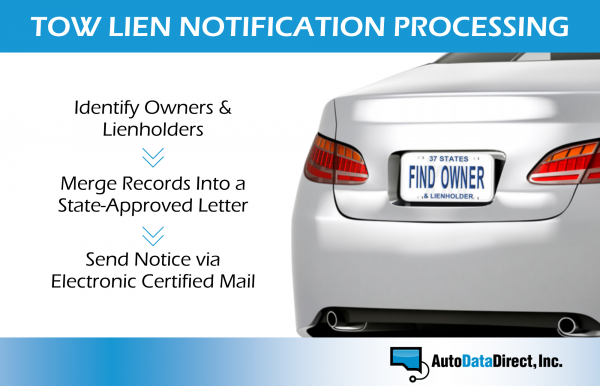 While Tennessee’s owner and lienholder notification statute requires the tow company to send the state one dollar for a Tennessee record from them, ADD’s DMV123 real-time vehicle records search provides the information instantaneously. “I have to send the dollar off to the state, but I can go ahead and pull the record through ADD and send my letter immediately. As long as the record that comes back from the state is the same as I received from ADD, which happens more than 95% of the time, I’m ahead of the game,” says Jimmy. “And if the vehicle is from another state that ADD offers, I can verify the record and send my Tennessee letter. ADD is reliable and their system has sped up the process, saving me time and money.”
While Tennessee’s owner and lienholder notification statute requires the tow company to send the state one dollar for a Tennessee record from them, ADD’s DMV123 real-time vehicle records search provides the information instantaneously. “I have to send the dollar off to the state, but I can go ahead and pull the record through ADD and send my letter immediately. As long as the record that comes back from the state is the same as I received from ADD, which happens more than 95% of the time, I’m ahead of the game,” says Jimmy. “And if the vehicle is from another state that ADD offers, I can verify the record and send my Tennessee letter. ADD is reliable and their system has sped up the process, saving me time and money.”